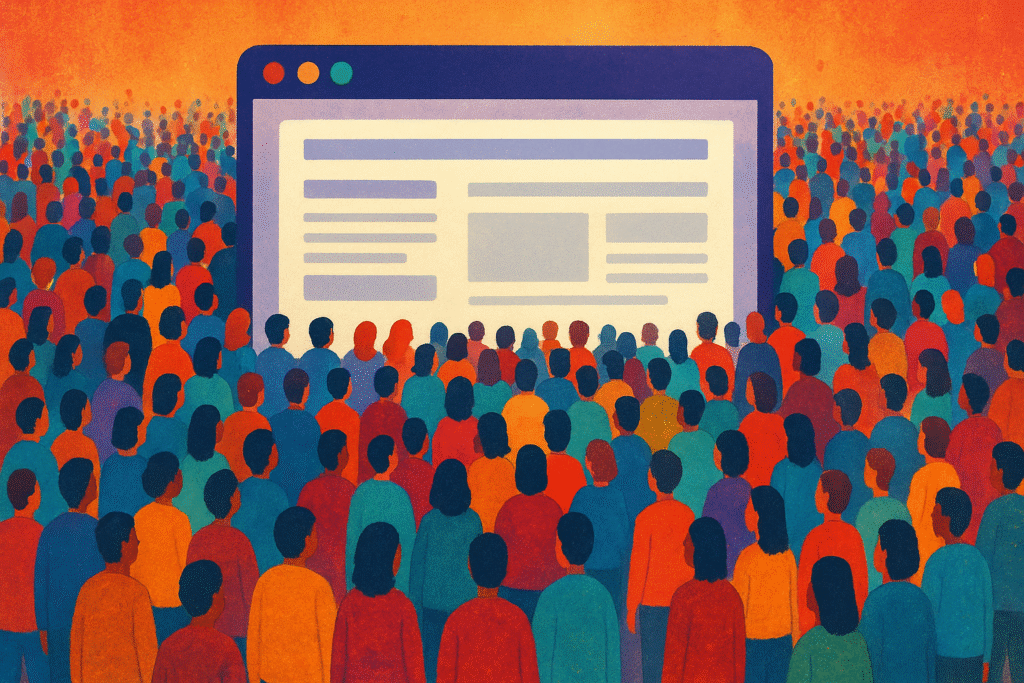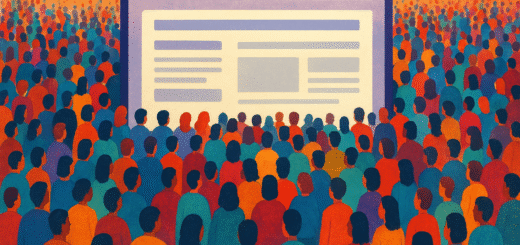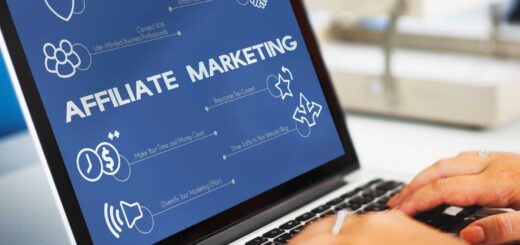How to Flood Your Website With Traffic for Just $2 a Day (Even If You Have Zero Followers)
If you’ve been burning cash on ads that don’t convert, churning out faceless AI videos that flop, or praying for SEO miracles that never come, this is for you.
What if you could flood your site with traffic – real, engaged visitors—for just $2 a day? No gimmicks. No complicated funnels. Just smart targeting, basic AI prompts, and a ridiculously simple Facebook strategy.
This method has helped generate hundreds of millions of visitors—and it works even if you have no audience, no email list, and no clue where to begin.
Why $2 Works (And Why Expensive Ads Often Don’t)
First, let’s address the elephant in the Facebook ad room.
Why just $2? Isn’t that like tossing pocket change into the Grand Canyon and hoping for an echo?
Actually, no. Here’s why it works:
- Facebook’s algorithm prioritizes engagement. When you boost a high-quality post – even with a tiny budget – it can generate outsized organic reach through shares, likes, and clicks.
- Low friction = high volume. Instead of asking people to opt in or buy, you’re leading with helpful, relevant content tied to deep psychological triggers.
- It taps into curiosity and relevance. If the post resonates with your audience’s most pressing problems or burning desires, they’ll click. And once they click, you’ve got them.
Now let’s dive into how you make this system run (and scale).
Step 1: Choose the Right (Broad) Market
Forget all the “riches in the niches” advice for a second. While that might work for selling high-ticket services, it’s terrible advice for this strategy.
Instead, you want to be in a big pond: health, wealth, relationships, pets, parenting, weight loss, side hustles, etc. Why?
Because this system relies on content that spreads. And content that spreads needs a big enough crowd to catch fire.
Avoid “embarrassment niches” where people don’t want to share or comment (think: hemorrhoid hacks, toenail fungus, or other awkward issues). Focus on topics people are happy to share or talk about on social.
Step 2: Create Your Problem / Goal / Benefit List
This list of problems, goals and the associated benefit to each is your secret weapon
Here’s how to break it down:
- 5 Problems – Urgent frustrations or pain points your audience is dying to solve.
- 5 Goals – Aspirational outcomes they dream of achieving.
- 10 Benefits – The emotional or tangible wins they get once each of their problems are solved or their goals are achieved.
Example (Weight Loss Niche):
- Problem: “I hate how I look in pictures.”
- Goal: “I want to feel confident in my clothes.”
- Benefit: “I’ll finally be able to enjoy beach vacations without cover-ups.”
Use AI to help if you’re stuck. Prompt:
“List 5 urgent problems, 5 aspirational goals, and 10 emotional benefits for someone trying to lose weight.”
You can swap in any niche.
Why this works: You’re speaking directly to the internal monologue your readers already have. When someone sees a post that reflects their private pain, they click. That’s dopamine. That’s attention. That’s traffic.
Step 3: Use AI to Generate 10 Pillar Posts
Now comes the fun part. For each PGB item, use AI to create a high-value blog post.
Each article should be:
- Focused on one specific problem or goal
- Evergreen (not trend-based or seasonal)
- Helpful and actionable
- Emotionally resonant (touching on that deep desire or fear)
For example, in the dog niche:
Problem: “My dog barks all night.”
Post: “How to Train Your Dog to Sleep Peacefully—Without Yelling or Guilt”
AI can help you write these in 5 minutes each. Prompt:
“Write a 1,000-word blog post solving [specific problem] for [target audience]. Include actionable tips and emotional language.”
Post these on your website or blog. These are your home base pieces—the articles you’ll drive traffic to.
Step 4: Post Each Article to Facebook (as Your Business Page)
Take your blog post and share it on your Facebook business page.
Keep the caption casual and curiosity-driven:
“Ever wonder why your dog won’t stop barking at night? Here’s what finally worked for me…”
Add your link. Hit publish.
This post now becomes the foundation for both paid and organic exposure.
Step 5: Spend Just $2/Day Boosting the Post
Now go into Facebook Ads Manager (not just “Boost Post” if you can avoid it) and:
- Choose “Engagement” as your campaign objective.
- Select “Post Engagement.”
- Set your budget to $2/day.
- Target broad audiences relevant to your niche (e.g. dog owners, weight loss seekers, entrepreneurs).
Let it run for 3 full days.
Why “Engagement”? Because Facebook will show the post to people most likely to comment, like, and share—which creates virality loops and triggers the algorithm to spread your content further. It’s performance compounding.
Step 6: Check the Numbers and Scale What Works
After 3 days, check your link click-through rate (CTR):
- Under 2% – Cut it. Not worth scaling.
- 2–4% – Keep it running. Monitor.
- 4%+ – Jackpot. Scale it up to $5, then $10, then more.
This is where most marketers mess up. They try 10 things, and when 8 of them flop, they quit. Don’t do that.
Instead, focus on the one that works and double down. Then make 3-5 more articles on that exact same topic. Yes, seriously. If “how to stop your dog barking” works, make:
- “3 Weird Reasons Dogs Bark at Night”
- “The One Trick That Stopped My Dog From Barking (Even During Thunderstorms)”
- “How I Got My Dog to Sleep Through the Night Without Medication”
This is intentional repetition, not laziness. It’s how viral marketers scale traffic—by feeding what the algorithm (and the audience) already wants.
Step 7: Turn Traffic into a Self-Feeding Machine
Once you find what works:
- Make new posts on the same topic
- Spin off related angles
- Scale ads for top performers
- Cut what doesn’t work
This is how you build a self-correcting content system. Traffic becomes predictable. Profitable. And scalable.
The Psychology That Makes This Work
So why does this low-cost strategy work so well?
It’s the perfect storm of:
- Emotional resonance: You’re talking to the reader’s real problems and desires.
- Curiosity-driven hooks: You’re tapping into open loops and “I need to know” moments.
- Momentum psychology: Micro-commitments (a click) lead to bigger commitments (reading, subscribing, buying).
- AI leverage: You can generate endless content fast, keeping your system running without burnout.
In essence, you’re using $2 to buy engagement signals, which Facebook then amplifies for free. This is how “little guys” (aka solo marketers) compete with big-budget brands.
A Quick Stat to Consider
According to Statista, the average CPC (cost-per-click) for Facebook ads across industries is $0.94. But when you’re getting 4–8% CTRs using emotional, content-driven posts?
Then you’re often seeing effective CPCs of $0.05–$0.20—an 80–95% discount on the market average.
Making the System Work for You
Let’s recap.
- You don’t need a massive list or YouTube channel.
- You don’t need to spend $1,000 on ads.
- You just need 10 emotionally powerful blog posts, a couple bucks a day, and the willingness to double down on winners.
Yes, it takes some front-end effort. But this is one of the most repeatable, low-cost traffic strategies available today – and thanks to AI, anyone can do it.
In short, this is what separates digital window-shoppers from business owners with real momentum.
So, are you going to test it?
Start with $2. Let the data tell you what works. Scale the winners.
Then sit back and watch your traffic snowball.
Monetizing Your New Traffic
Once you have traffic flowing using the $2 AI + Facebook strategy, monetization becomes all about intent and conversion pathways. Here’s a breakdown of how to monetize the system effectively, with multiple options depending on your niche, audience, and offers.
- Build an Email List (Then Monetize It)
Why it works: Traffic without a list is a leaky funnel. Your pillar posts should include an opt-in offer (lead magnet) related to the specific problem or goal in the article.
Example lead magnets:
- Checklist: “7 Things to Stop Eating if You Want to Lose Belly Fat”
- PDF Guide: “How I Made My First $1K as a Freelance Writer”
- Quiz: “What’s Your Productivity Style?” (then deliver targeted content)
Once they’re on your list:
- Send weekly emails with value + soft CTAs
- Pitch your own products, affiliate offers, or services
- Use email to test offers before building full sales pages
Bonus: Use AI to write your welcome series and newsletters.
- Promote Affiliate Offers
Why it works: You already know what your audience wants (from the 10PGB). Now you can connect those needs to products that solve them—and earn a commission.
Where to place affiliate links:
- Inside the pillar posts themselves
- As a soft CTA in the email welcome series
- In post scripts (“P.S. Here’s the tool I use for X”)
- In dedicated review or comparison posts you create later
Tools to find offers:
- ShareASale, ClickBank, Impact, Digistore24, Amazon Associates
- Or, reach out directly to tools/products in your niche
Tip: Choose evergreen, low-friction offers (like free trials or low-cost subscriptions).
- Sell a Digital Product or Service
Why it works: Once you’ve validated that people are clicking and engaging, you can create a simple offer that solves a key pain point.
Fast monetization ideas:
- Mini-course ($19–$49): Record 3–5 short videos solving one specific problem
- Paid guide ($7–$17): PDF version of your process, plan, or checklist
- Service offering: “Done-for-you,” coaching, audits, or consulting
- Workshop or challenge: Live Zoom session solving a focused problem
You can host on platforms like Gumroad, ThriveCart, Teachable, or even Stripe checkout pages + Notion/Google Drive.
- Offer Sponsored Content or Guest Posts
Why it works: Once your traffic starts to grow, other brands will want access to your audience. You can charge for:
- Sponsored posts on your blog
- Branded mentions in your email list
- Guest spots in your content cluster (especially if you’re ranking in search)
Tip: You can proactively pitch sponsors once you can show traffic stats, CTR, and engagement metrics.
- Use Meta Pixel + Retargeting
Why it works: You’re paying $2/day to bring in highly engaged visitors. You should own that data.
- Install Meta Pixel on your site
- After 100+ visitors, build a custom audience
- Retarget them with a specific offer or upsell (low-cost digital product, free webinar, etc.)
- Lookalike audiences become your scale lever later
This is the low-cost way to move cold visitors into warm buyers.
- Create a Community Funnel
Why it works: People crave connection—especially in big, emotionally charged markets like health, wealth, relationships, or creativity.
Add a CTA at the bottom of your posts:
“Want to connect with others on this journey? Join our free Facebook group here.”
Inside that group, you:
- Build trust
- Promote your offers
- Let affiliate partners run free trainings
- Launch future products or services to a warm crowd
Example Monetization Stack
Let’s say you have a pillar post about “how to stop your dog from barking.”
Here’s a monetization path:
- Lead Magnet: Free “Top 10 Dog Training Mistakes” PDF
- Tripwire: $9 training video (5-minute quiet command method)
- Main Offer: $39 mini-course on home dog training
- Affiliate Offer: Promote a dog whistle or training collar on Amazon
- Email Funnel: Weekly tips, upsells, affiliate recommendations
- Retargeting Ad: “Still need help with barking?” → free workshop offer
Bottom Line
Traffic is great, but monetization is what turns a tactic into a business. With this $2 traffic strategy, your goal isn’t just to get clicks – it’s to earn permission to solve deeper problems for your audience.
Start with one monetization method. Validate it. Then layer on others as your traffic and insights grow. Done right, this system can create a full ecosystem of evergreen content + recurring revenue – on a budget.

























